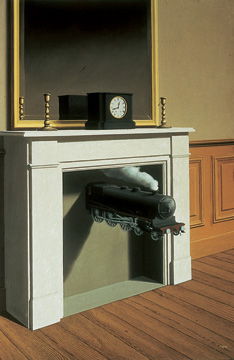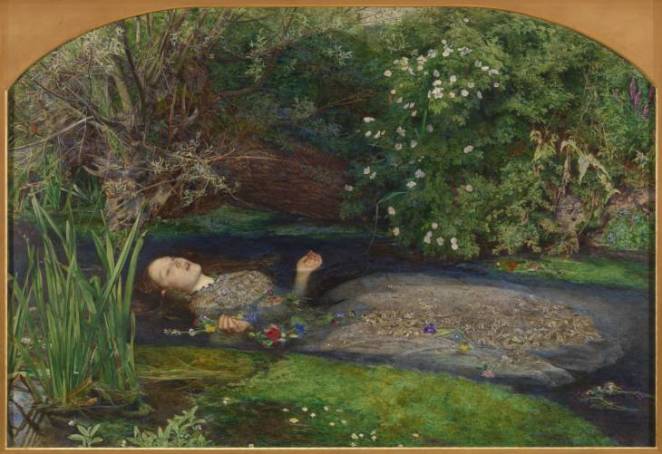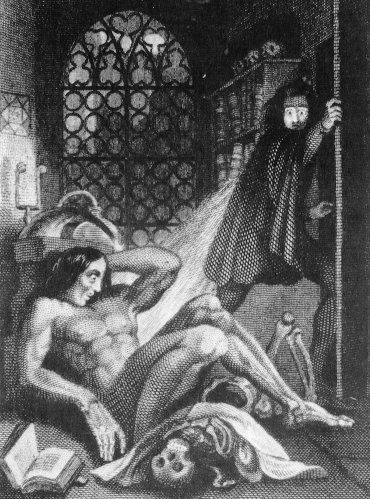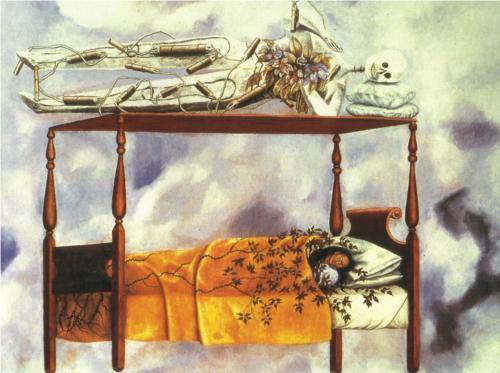The most beautiful experience we can have is the mysterious. – Einstein
art
The Uncanny

Magritte, Time Transfixed 1938 Art Institute of Chicago
The uncanny, Freud writes, is a psychotic symptom that signals the destruction of the self. What is familiar appears strange and, consequently, frightening. Sense perception is suddenly unreliable: oddly, the known is also unknown. Identity is no longer secure. A pervasive feeling of unreality and a related sense of deadness typically associated with dissociation may be the effect.
Sublime Terror
“The shudder released by the work of art, the experience of the modernist sublime, is the memory of the experience of terror and strangeness in the face of threatening nature. Shudder is the memorial experience of nature’s transcendence, its non-identity and sublimity, at one remove. Shudder is a memory, an afterimage, ‘of what is to be preserved’… Shudder is the address of the other; it corresponds to what Gadamer would identify as strangeness in the object of understanding, and what Heidegger thinks of in terms of the claim of being. Above all, shudder is the terror of the sublime in Kant, a terror made safe by the retraction of the object at its source.”
– J.M. Bernstein, The Fate of Art
“So far we have seen that the shudder is not just a mimetic reaction to primary, undifferentiated otherness. It is also, and more importantly for our purposes, a spontaneous and somatic response of revulsion at pure identity. But even in this extended sense the shudder is not merely a negative response. The shudder fulfils a positive epistemic function. It is the gateway to the path of truth. It allows what is to disclose itself as radically evil. As such, the shudder is the form which metaphysical experience assumes under social conditions of total identity… In Aesthetic Theory Adorno claims that works of modernist art can, in virtue of their characteristic autonomy, successfully capture and impart the shudder…The shudder is a reaction to the cryptically shut, which is a function of that element of indeterminacy.”
– James Finlayson, Metaphysical Experience
In The Sublime Object of Psychiatry: Clinical and Cultural Approaches to Schizophrenia (Oxford UP: 2011), Angela Woods argues that schizophrenia is invoked as psychiatry’s disciplinary limit point and, as such, becomes psychiatry’s ‘sublime object’: “Through its ongoing construction in psychiatric writing as opaque, bizarre, and resistant to analysis, schizophrenia at once attracts and frustrates ever more sophisticated forms of scientific inquiry, exceeding and thus marking the limits of any given interpretive model” (16-17).
“Form often is most expressive when least coherent.” – Kandinsky

Several Circles – 1926
Sublime Horror

Ophelia – Millais, 1852 Tate
In Kristeva’s Powers of Horror, the abject reflects the human reaction to the threat of breakdown in meaning correlative to the loss of the distinction between subject and object, self and world. Reference to the corpse represents a traumatic loss of identity and functions as the exemplary reminder of our materiality. Mary Shelley’s monster personifies both the corruption of knowledge and power. As an aesthetic representation of the conflation of Science and Nature, Frankenstein is a sublime object. In clinical terms, the monster is an uncanny figure of paranoid knowledge. Millais’ dead object gestures to the uncanny nature of sublime memory; unconsciously, we sense the terrifying knowledge that we already know. Kahlo’s self-portrait represents a form of life-writing that symbolizes the painter’s connection to the natural world. The figure of Death in the image suggests an imaginative network of proleptic meaning on the nature of life experience.

